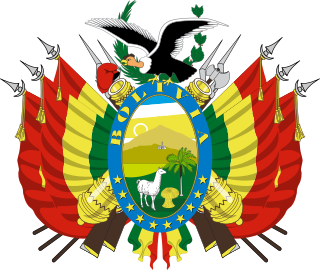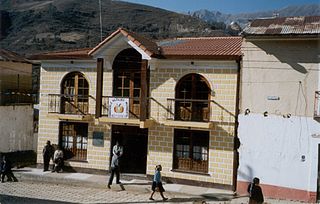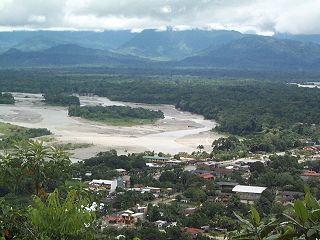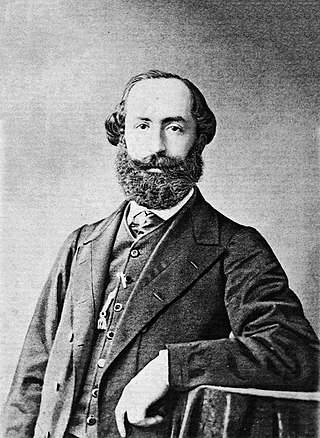Related Research Articles

Bolivia, officially the Plurinational State of Bolivia, officially it has 36 official languages, is a landlocked country located in central South America.It is a country with the largest geographic extension of Amazonian plains and lowlands, mountains and Chaco with a tropical climate, valleys with a warm climate, as well as being part of the Andes of South America and its high plateau areas with cold climates, hills and snow-capped mountains, with a wide biome in each city and region. It is part of the largest swamp in the world between Bolivia and Brazil. It is bordered by Brazil to the north and east, Paraguay to the southeast, Argentina to the south, Chile to the southwest, and Peru to the west. The seat of government is La Paz, which contains the executive, legislative, and electoral branches of government, while the constitutional capital is Sucre, the seat of the judiciary. The largest city and principal industrial center is Santa Cruz de la Sierra, located on the Llanos Orientales, a mostly flat region in the east of the country with a diverse non-Andean culture.

The demographic characteristics of the population of Bolivia are known from censuses, with the first census undertaken in 1826 and the most recent in 2012. The National Institute of Statistics of Bolivia (INE) has performed this task since 1950. The population of Bolivia in 2012 reached 10 million for the first time in history. The population density is 9.13 inhabitants per square kilometer, and the overall life expectancy in Bolivia at birth is 68.2 years. The population has steadily risen from the late 1800s to the present time. The natural growth rate of the population is positive, which has been a continuing trend since the 1950s; in 2012, Bolivia's birth rate continued to be higher than the death rate. Bolivia is in the third stage of demographic transition. In terms of age structure, the population is dominated by the 15–64 segment. The median age of the population is 23.1, and the gender ratio of the total population is 0.99 males per female.

The president of Bolivia, officially known as the president of the Plurinational State of Bolivia, is head of state and head of government of Bolivia and the captain general of the Armed Forces of Bolivia.

Ayopaya or Independencia is a town in the Cochabamba Department, Bolivia. It is the capital of the Ayopaya Province and Ayopaya Municipality. At the time of census 2001 it had a population of 2,014.

Punata is the capital of Punata Province and Punata Municipality in Cochabamba Department, Bolivia. At the time of census 2012 it had a population of 19,559 inhabitants and at the census 2012 the populations rose to 28.707 inhabitants. People from Punata and surrounding areas used to be called “Vallunos” meaning coming from the valleys of Punata and other surrounding small towns. Punata is renowned for its wonderful agricultural market held every Tuesday where people from surrounding towns and rural villages come to sell and buy.
Tiraque is a location in the Cochabamba Department, Bolivia, and capital of the Tiraque Province. At the time of census 2001 it had a population of 1,906.

Villa Tunari or Tunari is a location in the department of Cochabamba, Bolivia. It is the seat of the Villa Tunari Municipality, the third municipal section of the Chapare Province. According to the census 2012 the population was 3,213 in the town which is an increment from 2,510 registered during the 2001 census.

The vice president of Bolivia, officially known as the vice president of the Plurinational State of Bolivia, is the second highest political position in Bolivia. The vice president replaces the president in his definitive absence or others impediment and is the ex officio President of the Legislative Assembly.

Adolfo Ballivián Coll was a Bolivian military officer and politician who served as the 18th president of Bolivia from 1873 to 1874. His presidency was brief, yet serious financial and legislative problems, worsened or neglected by previous administrations, began to appear. These would have serious effects for Bolivia, leading up to the War of the Pacific.
Anzaldo is a location in the Cochabamba Department in central Bolivia. It is the seat of the Anzaldo Municipality, the second municipal section of the Esteban Arce Province.
Pocona is a location in the Cochabamba Department in central Bolivia. It is the seat of the Pocona Municipality, the third municipal section of the Carrasco Province. At the time of census 2001 it had a population of 244.

Bolivia has had seventeen constitutions, including the present one, since its foundation in 1825.

The most recent Constituent assembly of Bolivia was the Constituent Assembly of 2006–07, which drafted a new Constitution which was approved in the Constitutional referendum of 2009.

Bolivians are people identified with the country of Bolivia. This connection may be residential, legal, historical or cultural. For most Bolivians, several of these connections exist and are collectively the source of their being Bolivian.
Warázu, also known as Pauserna or Guarasugwé (Guarasú'we), is a moribund Tupi–Guaraní language of Brazil. It was also formerly spoken in Bolivia. It is spoken by the Guarasugwé people, who were estimated to number 125 according to a census in 2012.
The Tenth Census of Bolivia was conducted on 5 September 2001. The population was 8,274,325.
The Eighth Census of Bolivia is the national census of Bolivia conducted in 1976. The population was 4,613,486.

Bolivian Argentines are Argentine citizens of Bolivian descent or Bolivia-born people who immigrated to Argentina. In recent decades, Bolivia has become one of the main sources of immigration in Argentina, making Bolivians one of the largest Hispanic American immigrant groups in Argentina, along with Paraguayans, Peruvians and Venezuelans.

The nations of Bolivia and Mexico established diplomatic relations in 1831. Both nations are members of the Community of Latin American and Caribbean States, Latin American Integration Association, Organization of American States, Organization of Ibero-American States and the United Nations.
References
- ↑ "Censo en Bolivia se Inició en 1831" [Census in Bolivia Began in 1831]. La Opinión (in Spanish). 18 November 2012. Retrieved 19 January 2014.